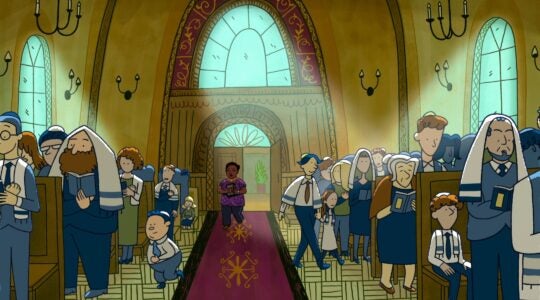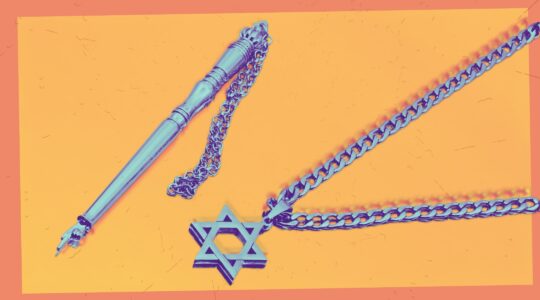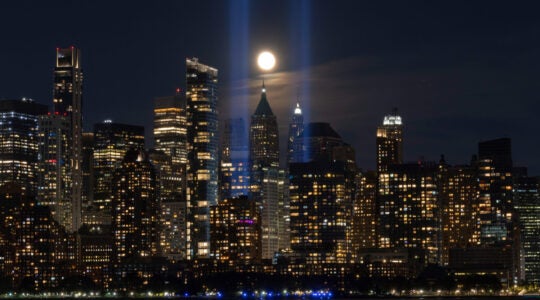How are we supposed to celebrate Simchat Torah this year with a full heart?
The very name of this holiday — “the joy of the Torah,” celebrating the completion of the annual Torah cycle — connotes an emotion we cannot fully inhabit on the anniversary on the Hebrew calendar of Hamas’s brutal attack on Israel.
I vividly remember standing in shul last year, wondering how we might celebrate with the Torah as the news trickled in. The rabbi kept updating us with the news of more and more dead, even as we sang the same celebratory songs of the holiday. Though we didn’t know the full extent of the devastation, it was still difficult to dance with the normal energy. A day meant to celebrate our love of tradition, embodied in the Torah, was forever altered.
And yet, we have completed another cycle of the Torah — and this is a reason to celebrate. We cannot fully convert Simchat Torah to a time of sadness. We have to balance these two emotions — joy and devastation.
Indeed, we are not the first generation to attempt to mark this holiday of joy in a context of anguish. The Vilna Gaon, the 18th-century Lithuanian sage, once said that the command to rejoice on Sukkot and Simchat Torah is the most difficult commandment in the Torah. Commenting on this, Elie Wiesel wrote: “I could never understand this puzzling remark. Only during the war did I understand. Those Jews who, in the course of their journey to the end of hope, managed to dance on Simchat Torah … they taught us how Jews should behave in the face of adversity.”
Wiesel reminds us that we have a long history of celebrating while suffering. So how might we give expression to these complicated emotions this Simchat Torah?
One of the leading Jewish scholars of the 20th century, Avraham Yaari, wrote a book-length study of Simchat Torah. In it, he writes about a few long-lost rituals, which acknowledge sadness even on this day of joy. (Rabbi David Golinkin recently summarized some of these rituals.) Understanding the complexity of this day — refracted through these rituals — is helping me prepare for Simchat Torah this year.
All these rituals center on a moment in our history that is heartbreaking: the death of Moses. The narrative of the end of the Torah — read only on Simchat Torah — concludes with a difficult scene: God shows Moses the entire promised land and then declares: “I have shown this to your eyes, but you shall not cross over there” (Deuteronomy 34:4). These are the last words spoken by God to Moses; in the next verse, Moses dies.
Simchat Torah is not only a day to celebrate the completion of the Torah; it is also a day to mark the tragic death of Moses, who never achieved his goal of entering the promised land. An ancient set of mourning rituals — placed right in the middle of the otherwise joyful service — marked Moses’ death. In its oldest form, the person honored with the aliyah before the reading that included Moses’ death would recite a special poem — later, for technical reasons, the poem moved to follow the Torah reading as a stand-alone ritual.
Much of the poem — called “Asher Biglal Avot” — praises Moses as a leader and teacher. But toward the end, it reads:
[Moses] let out a great and bitter cry when the Holy One said to him: ‘Go up and die on the mountain!’
He tore his clothes and raised his voice: ‘Joshua son of Nun — take care of my flock!’
Yaari dated this poem to the 6th century or earlier. Rav Saadia Gaon, a leader of the Jewish community at the turn of the ninth century, knew of this poem and decreed that it should be cut short — right before the lines quoted above (Orhot Hayyim #58). Apparently for R. Saadia Gaon, it was too sad a subject to recite on Simchat Torah.
Dozens of other poems marking Moses’ death were written over the centuries and recited on the holiday. One 14th-century Provence authority describes how following the Haftarah, the elders of the synagogue would remove all the Torah scrolls from the ark, stand on a platform and “mourn the death of Moses our teacher” through elegies. One prayer book from that time mentions a poem that begins: “this is a day of great crying, and rivers of tears.”
Dozens of these kinds of mournful poems were recited for hundreds of years in France, North Africa, Italy, Turkey and Aleppo. In Rome, they would intersperse sad poems between each verse at the end of the Torah. Some Jews — even up to the 20th century — would recite elegies to Moses after the synagogue service in their home, bursting into tears at certain lines, according to Yaari.
Other rituals beyond poems marked Moses’ death. The 10th-century rabbi Hai Gaon was asked about a practice to remove the Torah scroll from its protective case. He forbade the practice, yet added: “But if it is to mark the mourning of Moses, it is permitted.” In other words, stripping down the Torah to its bare scroll gave expression to a feeling of loss and suffering — on Simchat Torah.
It turns out that a holiday we consider as only suffused with joy for centuries has had an undercurrent of mourning running through it.
How might we learn from these past rituals? First, it is clear that throughout Jewish history, Simchat Torah was not experienced as entirely joyful; these poems and practices show us that we can make room for our sadness on this day. Indeed, we might add a poem to the service to mark what took place last year at this time; many new heart-wrenching poems have already been written. We might consider a physical marking of our mourning — something akin to removing the protective covering of the Torah scroll — to give expression to our feelings. This could include something we wear, or a change we make to the lighting or layout of the service.
We even might decide to make no direct ritual change, but take comfort in the fact that our ancestors who celebrated this day experienced sadness and gave voice to that.
Mourning the death of Moses is of course different from mourning the death of the hundreds killed, wounded and captured last Simchat Torah. But as I read those lines from one ancient poem about Moshe’s death, the phrase “Moses let out a great and bitter cry” (echoing Mordechai’s great and bitter cry upon hearing Haman’s decree) gave me pause. It is the voice I want to bring forth on Simchat Torah this year. Because we cannot celebrate this holiday with a full heart of joy, and we have to make room for our bitter cries.
JTA has documented Jewish history in real-time for over a century. Keep our journalism strong by joining us in supporting independent, award-winning reporting.







